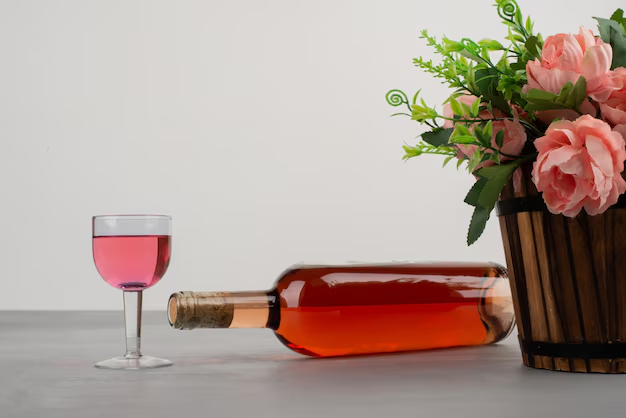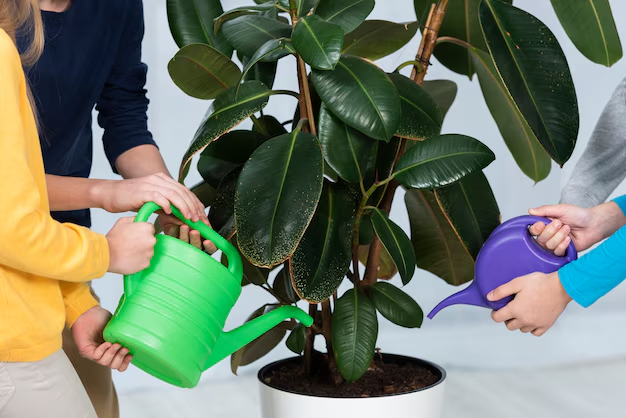Rose wine has captured the hearts of wine lovers around the globe, becoming a staple at summer picnics and elegant dinners. With its beautiful blush hue and refreshing taste, rose wine is much more than just a pretty drink; it embodies warmth, celebration, and relaxation. Whether sipping it by the pool or enjoying it with friends over dinner, rose wine brings people together.
This delightful beverage has seen a surge in popularity over recent years. Its versatility makes it an appealing choice for various occasions and palates. But what exactly goes into crafting that perfect glass? Join me on this journey as we explore everything from grape selection to bottling techniques, uncovering the art behind every sip of rose wine. Let’s dive deep into what makes this enchanting drink so special!
The Process of Making Rose Wine: From Grapes to Bottle
The magic of crafting rosé wine begins in the vineyard, where grape selection is vital. Varieties like Grenache and Syrah are often favored for their vibrant flavors.
Harvest season kicks off the process. Grapes are picked at optimal ripeness to ensure a balance of sweetness and acidity.
Once collected, they undergo crushing. This step releases juice while retaining some skin contact, which imparts that beautiful pink hue characteristic of rosé.
Next comes fermentation. Unlike red wines that ferment with skins for extended periods, rosés typically have a shorter skin contact time—just enough to achieve color without overwhelming tannins.
After fermentation, the wine is pressed again to remove solids before aging in stainless steel or oak barrels. This stage allows the flavors to develop further before bottling.
It’s filtered and then bottled—ready for you to enjoy! Each bottle tells a story of its journey from vine to glass.
Factors that Affect the Taste of Rose Wine
Several key factors influence the taste of rosé wine. First, the grape variety plays a crucial role. Different grapes bring distinct flavors and aromas to the final product.
The climate also matters. Grapes ripened in warmer regions often yield wines with richer fruit profiles, while cooler climates can produce more delicate and crisp notes.
Winemaking techniques contribute significantly as well. The duration of skin contact during fermentation affects color and flavor intensity. A longer maceration leads to bolder hues and deeper tastes.
Terroir, or the unique environmental conditions where grapes are grown, shapes each wine’s character too. Soil composition and topography influence how vines develop their grapes.
Aging methods impact taste complexity. Whether aged in stainless steel or oak barrels can introduce varying nuances that elevate the experience of sipping rosé wine.
Different Styles of Rose Wine
Rose wine comes in a variety of styles, each offering a unique tasting experience. From the pale blush hues to deeper, more vibrant shades, color often hints at flavor intensity.
One popular style is the dry rose, characterized by crisp acidity and refreshing notes of red berries. This type pairs beautifully with light summer dishes.
On the other hand, off-dry rosés have a hint of sweetness. They appeal to those who enjoy fruity flavors without overwhelming sugariness.
Then there’s sparkling rose wine. Bubbly and festive, it adds an effervescent twist to any occasion.
Consider orange rosé made from skin-contact white grapes. It boasts richer tannins and complex flavors that can surprise even seasoned palates.
Each style brings its charm and character to the table, making exploration exciting for every wine lover.
Pairing Rose Wine with Food
Rose wine is incredibly versatile, making it a delightful companion for various dishes. Its refreshing acidity and fruit-forward notes enhance many flavors.
For light summer salads topped with citrus dressings, a dry rose works wonders. The crispness of the wine complements the fresh greens beautifully.
When it comes to seafood, think grilled shrimp or seared scallops. A chilled glass of rose adds an elegant touch to these meals, balancing their richness perfectly.
Charcuterie boards are another fantastic match. The combination of cured meats and artisanal cheeses pairs harmoniously with rose’s berry undertones.
Don’t overlook pizza! A slice with fresh basil and tomato sauce can elevate your dining experience when enjoyed alongside a fruity rosé.
Whether picnicking outdoors or hosting a dinner party at home, pairing rose wine thoughtfully can transform any meal into an unforgettable occasion.
Popular Regions for Producing Rose Wine
France stands out as the quintessential producer of rosé wine. The region of Provence is especially famous, and celebrated for its delicate and dry styles. Here, vineyards bask in the Mediterranean sun, yielding grapes with vibrant flavors.
Spain also plays a significant role in the rosé scene. Known as “rosado,” these wines often feature richer fruit notes due to the country’s warmer climate. Regions like Rioja are particularly noted for their expressive blends.
California has made a name for itself too, embracing innovative techniques that cater to contemporary tastes. Its diverse terroirs allow winemakers to experiment with various grape varieties, producing unique and exciting offerings.
Italy contributes its own twist on rosé through “rosato” wines. Each region brings something different—from lighter styles in Veneto to fuller-bodied versions found in Puglia—making Italian rosés an adventure worth exploring.
Tips for Choosing and Storing Rose Wine
Choosing the right rosé wine can be a delightful journey. Start by considering the grape variety; each brings unique characteristics to the glass. Popular choices include Grenache, Syrah, and Pinot Noir.
When selecting a bottle, take note of its color. A lighter hue typically indicates a crisp and refreshing taste, while deeper shades suggest more robust flavors.
Storage is equally important for preserving quality. Keep your rosé in a cool, dark place away from direct sunlight. An ideal temperature ranges between 45°F to 55°F.
Don’t forget about humidity levels; they help maintain cork integrity. If you’re storing multiple bottles, consider keeping them horizontally so the wine stays in contact with the cork.
Always chill your rosé before serving—around 50°F is perfect for enhancing those lovely fruit notes and aromas that make it so enjoyable!
Experimenting with DIY Rose Winemaking at Home
Crafting rose wine at home can be an exciting and rewarding adventure. It allows you to explore your taste preferences while gaining hands-on experience in winemaking.
Start with fresh grapes, preferably red varieties like Grenache or Syrah. Crush them gently to release their juices without compromising the skins too much. This step is crucial for achieving that lovely pink hue.
The fermentation process requires careful monitoring of temperature and time. Aim for a shorter maceration period if you want a lighter flavor profile.
Once fermentation is complete, it’s time to strain out the solids and transfer your young wine into a clean container. Patience plays a vital role here; let it age for several weeks before bottling.
Experimenting with different grape blends and techniques will keep each batch unique. Enjoy the journey as you refine your skills in creating delightful rose wines right from your kitchen!
The Rising Trend of Organic and Natural Rose Wines
The world of wine is witnessing a refreshing shift towards organic and natural rose wines. This trend reflects a growing consumer consciousness about health, sustainability, and environmental impact. As more people seek authentic experiences, winemakers are responding by cultivating grapes using organic methods.
Organic rose wines often showcase the terroir in a way that conventional methods can’t replicate. These wines avoid synthetic pesticides and fertilizers, allowing for richer flavors and aromas to develop naturally.
Natural fermentation processes further enhance their character. With minimal intervention in the winery, these wines embody unique profiles that tell the story of their origin.
This resurgence supports local economies as many producers embrace traditional practices passed down through generations. Enthusiasts appreciate not just the taste but also the philosophy behind each bottle—making every sip feel like an act of conscious choice.
Conclusion
Rose wine has a charm that captivates many. Its vibrant hues and refreshing flavors appeal to both casual drinkers and connoisseurs alike.
Exploring the world of roses offers endless opportunities for discovery. Each bottle tells a story, from terroir to technique.
As you sip on your favorite glass, consider the journey it took to reach you. The careful cultivation of grapes, skilled fermentation practices, and thoughtful aging processes all play vital roles in creating that perfect taste.
Whether you’re pairing it with food or enjoying it solo on a warm evening, rose wine brings joy and sophistication to any occasion. Embrace its versatility; there’s always something new to learn about this beloved beverage.
So raise your glass—and toast to the art of crafting exceptional rose wines!
FAQs
What is rose wine?
Rose wine is a type of wine that combines the flavors of red and white wines. It’s made primarily from red grapes, where the skins are allowed to remain in contact with the juice for a limited time, giving it its pink hue.
How should I serve rose wine?
Serve rose wine chilled, typically between 50°F and 55°F (10°C to 13°C). This temperature enhances its refreshing qualities and aromas.
Can I age rose wine?
Most rosé wines are meant to be enjoyed young. However, some premium varieties can age well for a few years under proper conditions.
What foods pair best with rose wine?
Rose pairs beautifully with various dishes. Think seafood, salads, grilled meats, and even spicy foods. Its versatility makes it an excellent companion at any meal.
Are there different types of rosé wines?
Yes! There are several styles ranging from dry to sweet. Some popular variations include Provencal rosés and sparkling versions like Rosé Champagne.
How do I choose a good bottle of rosé?
Look for clear labeling indicating quality regions or winemaking methods. Trust your palate; try different bottles until you find what suits your taste buds best.
Is organic or natural rosé better than conventional ones?
Organic and natural options often emphasize sustainable practices without synthetic additives. Personal preference plays a big role here; many enthusiasts appreciate their unique flavor profiles.
Can I make my own rosé at home?
Absolutely! With some basic equipment and fresh grapes or grape juice, you can experiment with creating your own version of this delightful beverage right in your kitchen!
Feel free to explore these aspects further as you delve into the world of rose wine—there’s always something new to learn and enjoy!










